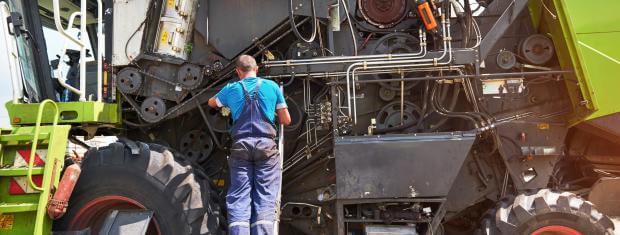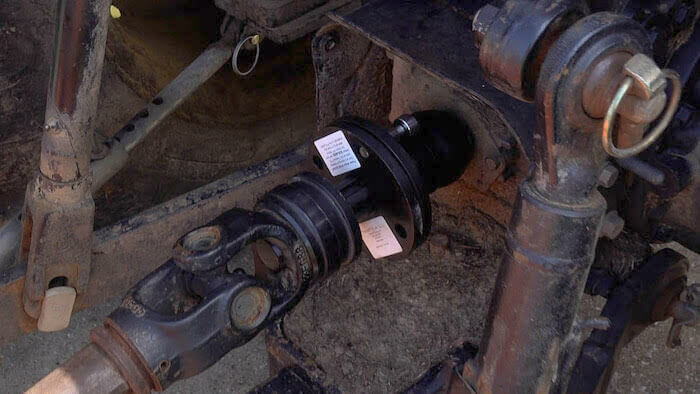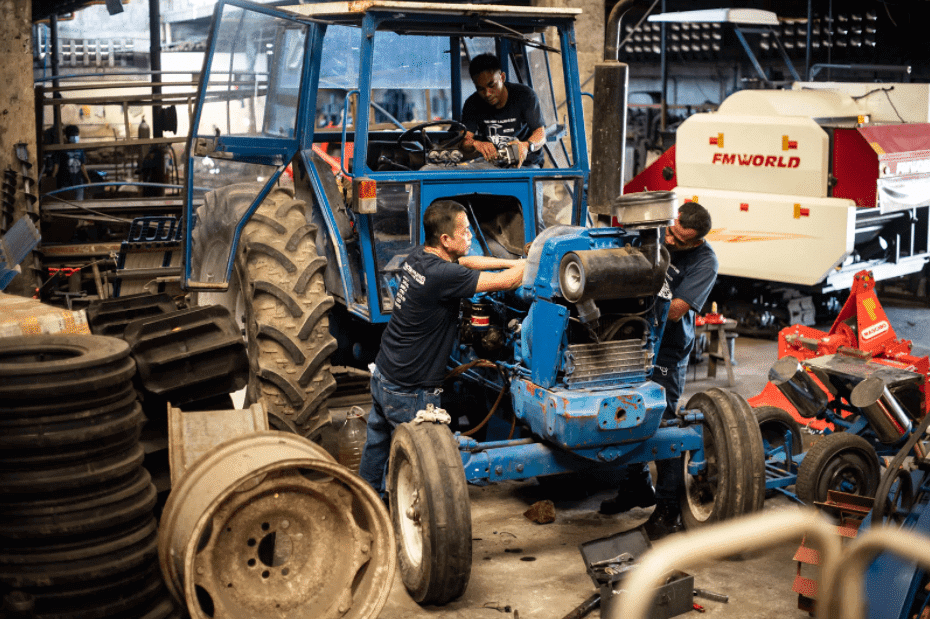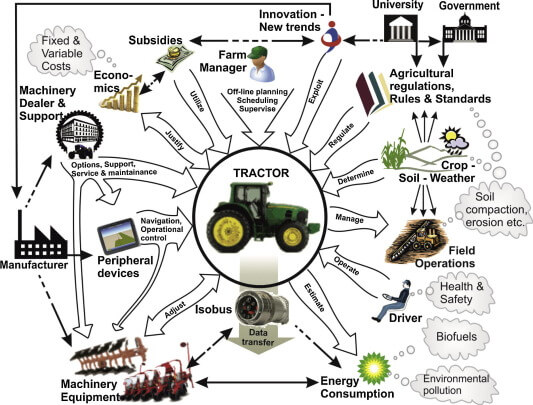In today’s agriculture economy, buying used farm machinery is a common strategy to reduce costs and maintain productivity. However, the second-hand market is filled with risks—refurbished, repainted, and scrap-grade equipment is often disguised as reliable machines. This comprehensive guide breaks down a practical 3-step approach to help farmers, dealers, and agri-investors identify hidden issues before making a purchase. Included is a downloadable inspection flowchart to assist in real-time evaluations.
So, how can you avoid being scammed or overpaying for used agricultural equipment? The answer lies in a structured inspection process that focuses on appearance, mechanical function, and documentation. By methodically checking key areas and knowing common red flags, you can distinguish between genuine used machines and cosmetically repaired scrap. Not only does this save money—it also ensures better field performance and lower maintenance headaches.
Curious how to tell if a tractor’s paint job is hiding structural fatigue? Want to learn the fastest way to verify if a harvester has been rebuilt with substandard parts? Read on as we detail the 3 critical steps and show you how to avoid costly mistakes when buying used machinery.
Contents
When to Consider Buying or Replacing Farm Equipment
Investing in farm machinery is a major financial commitment, and several key factors should guide the decision to upgrade or replace equipment. For instance, if you’re facing labor shortages during critical times like planting season or hay baling, upgrading to a larger or more efficient machine may help maintain productivity. Additionally, equipment that has seen years of heavy use may start requiring frequent and costly repairs, reducing reliability during busy periods.
While purchasing brand-new equipment may be appealing, rising costs and high interest rates can make it a tough financial choice. In such cases, opting for well-maintained used machinery can be a smart alternative. It allows you to stay operational and meet production demands without overextending your budget.
Visual Inspection – Beyond the Paint Job
Paint and Weld Check
Check for inconsistencies in the paint finish across the body panels. Freshly painted spots or areas with uneven gloss can indicate recent touch-ups used to cover damage.Focus on welds at stress-bearing points like loader arms, hitch joints, and structural beams. Inconsistent bead size or overlapping welds often reveal repairs done without factory precision.Use a magnet along painted surfaces to detect body filler, especially on panels that should be metal. Weak magnetic response suggests patched or filled corrosion.
Rust, Corrosion, and Frame Integrity
Inspect the undercarriage, wheel wells, and hidden brackets for deep rust flakes, bubbling paint, or rot holes. These areas are hard to repair and costly to reinforce.Use a flashlight and mirror to inspect corners where water might accumulate. Poor drainage in these areas causes internal corrosion that’s not visible at first glance.
Tires, Tracks, and Undercarriage Wear
Evaluate tire conditions for dry cracks, uneven tread wear, and age by checking sidewall markings. Replacement can be expensive if all four need changing.For track systems, check for sagging, uneven track tension, or bent rollers. These symptoms suggest worn sprockets or misaligned guides needing realignment.
Cab Condition and Dashboard
An overly clean interior might signal recent cosmetic work. Check the wear on pedals, seat cushions, and control knobs for consistency with claimed usage hours.Turn on the dashboard and confirm all warning lights illuminate momentarily before starting the engine. Disabled indicators may be hiding critical system issues.

Select Equipment That Aligns With Your Farm’s Needs
When buying used farm machinery, it’s important to assess whether the equipment suits your operation’s size and goals. Whether you’re replacing outdated tools or planning for growth, you should evaluate key factors such as work capacity, horsepower, and the specific tasks the equipment will handle. For instance, a compact tractor with around 85 PTO horsepower might be sufficient for a small-scale livestock farm. However, if your aim is to cover more acreage or boost daily productivity, a more powerful machine will be necessary.
It’s also important to ensure the new equipment integrates well with your current lineup to prevent mismatched performance or added expenses. On technologically advanced farms, you may also need to verify that the equipment is compatible with existing precision farming systems, like GPS or data logging devices, to maintain workflow efficiency and maximize return on investment.
Mechanical and Functional Assessment
Engine Performance

Observe the startup behavior—cold starts should be smooth with minimal smoke. Excessive cranking or hard starts can indicate worn components.Check for leaks around valve covers, fuel injectors, and oil pans. Persistent leaks can point to aging seals or warped components.Assess exhaust color during operation: blue smoke implies oil burn, black signals excess fuel, and white suggests coolant intrusion—a major concern.
Hydraulic System Test
Open the hydraulic reservoir and check fluid condition. Dark, milky, or frothy fluid signals contamination or internal water ingress.Operate all hydraulic implements under load. Hesitation, jerky movements, or loud whining from the pump suggest possible cavitation or worn-out internals.Examine all hoses for bulges, cracks, or signs of abrasion. Temporary fixes like duct tape or hose clamps are red flags.
Transmission and Drivetrain
Shift through all gears under varying loads. Grinding or delayed engagement, especially in high torque settings, could mean clutch or gear damage.Test clutch bite point and smoothness of engagement. Slippage or shuddering under pressure needs mechanical attention.Look under the machine for leaking gearbox fluid or worn-out universal joints. These could lead to full transmission failure if neglected.
PTO and Implement Connection
Run the PTO system with different RPMs. A whining noise or fluctuating speed may indicate bearing wear or shaft misalignment.Check for missing PTO shaft guards and listen for any grinding while engaging or disengaging. Unsafe or rough operation is a warning sign.Try attaching a real implement. If power delivery is unstable or there’s noticeable vibration, internal PTO issues may be present.
Know the True Costs Before You Invest
Financial considerations are a key part of deciding whether to buy, lease, or outsource with a custom operator. While owning your own equipment provides flexibility and independence, it also means you need to account for both visible and hidden expenses—from insurance and fuel to maintenance and depreciation. One advantage of purchasing new machinery is the added peace of mind that comes with a manufacturer’s warranty, something that’s often missing or limited with pre-owned equipment.
To avoid unexpected breakdowns and repair bills, it’s essential to understand the machine’s service history and current condition. Working closely with a trusted technician, reviewing maintenance records, and ensuring that parts are readily available are smart steps to reduce risk and avoid downtime during critical work windows.

For many farmers, purchasing used equipment offers significant savings upfront, especially during periods when high interest rates make financing new models less attractive. Pre-owned machines allow you to preserve cash flow for other farm priorities, such as seed, feed, or infrastructure. If the machine has been well cared for and maintained according to the manufacturer’s guidelines, it can continue to perform reliably and retain good resale value. Taking time to inspect and evaluate used equipment thoroughly can turn it into a cost-effective and dependable asset.
Paperwork and Historical Verification
Serial Number Validation
Locate the chassis serial number and cross-reference it with official manufacturer databases. Avoid machines where the number is ground down or replaced.Ensure the serial matches the paperwork. Discrepancies could mean tampering or unreported modifications.
Service History Review
Request and verify full service records. A well-documented history of oil changes, part replacements, and inspections shows responsible ownership.Be skeptical of incomplete, vague, or handwritten notes, especially when large gaps between services are unexplained.
Ownership and Import Records
Ask for a clear chain of custody or prior ownership trail. Ensure there are no outstanding liens or title disputes.If the unit was imported, request customs clearance documents and emissions compliance papers to avoid future legal or resale issues.
Hours Meter and Usage Pattern
Cross-check reported operating hours with physical indicators like foot pedal wear, seat cushion sagging, and joystick movement stiffness.Be wary of machines showing low hours but exhibiting advanced wear. This could suggest meter tampering or odometer rollback.
Make Safety a Key Part of Your Equipment Investment
When evaluating used farm equipment, safety should be at the top of your checklist. Agriculture ranks among the most dangerous industries, and machinery—especially row crop, silage, and hay harvesters—can pose serious risks during use and maintenance. Look for essential safety features like protective shields, proper lighting, reflectors, and a slow-moving vehicle (SMV) emblem. Equipment with ROPS (Rollover Protective Structures) is especially important when working on uneven or sloped terrain.
Machines lacking these features, particularly older models, may pose unnecessary hazards and might not justify the risk or cost. The presence of intact safety guards can also give insight into how well the previous owner maintained the equipment. Always request the operator’s manual when buying secondhand machinery—it’s not only useful for learning how to run and maintain the equipment properly but is also vital for ensuring safe operation. Don’t overlook proper training for anyone using the equipment; the manual is your best resource for that.
Bonus: Downloadable Inspection Flowchart
Included with this guide is a downloadable flowchart that breaks down these 3 steps into an easy-to-follow inspection checklist. Whether you’re in the field or on a dealer lot, the chart helps standardize your evaluation process and reduce the risk of purchasing subpar machinery.

Conclusion
Buying used farm machinery doesn’t have to be a gamble. With the right inspection strategy and a critical eye, you can avoid costly pitfalls and invest confidently. From paint inconsistencies to drivetrain diagnostics, each step helps uncover the true condition of the machine.
For added assurance, MINNUO Agricultural Machinery offers professionally inspected and certified second-hand equipment, backed by expert advice and post-sale support. Whether you’re looking for a reliable tractor or a specialized harvester, MINNUO is a trusted partner in helping you make smarter, safer farm machinery investments.

